I hope you like bosses because the second half of chapter 5 really lets the players have it.
The ultimate confrontations are built up with one of
Kitajima’s visual novel scenes depicting two characters that have never shared
a scene together.
Hanzo is running through the forest after a suspicious
individual. He throws a kunai dead on
into the back of their neck, but they used the classic substitution jutsu to
escape. Hanzo turns around and the
person he’s chasing is revealed to be none other than Dougen. Yes, Haruka was not mistaken. Dougen lived through his youma dying on top
of him in chapter 2. I like to think him
being part youma now had a part in that.
I assume Hibari and Haruka warned everyone about Dougen and everyone
shared their information offscreen because Hanzo knows who Dougen is. Being the head of one of the most prestigious
good shinobi academies probably entitles him to enemy information as well, I
suppose.
This is an interesting confrontation, not just because of
their alignment with different shinobi factions, but because of their
skills. Dougen has been shown to use
trickery and mind control, but now he’s being confronted by Hanzo, who has been
well-established as a legend. Even
retired he is feared by evil shinobi and earning his respect is considered a
high honor for good shinobi. As such,
you can probably tell where this is going.
It turns out Hanzo knew about the substitution and quickly
set up a wire trap ahead of time to trap Dougen when he tried to sneak up on him. With Dougen completely bound, Hanzo forces Dougen
to tell him what he’s doing snooping around Kyoto .
Dougen is legitimately shocked at the wire trap. As ninja tricks go, it’s sort of basic, so
for a character as menacing as Dougen, it’s pretty embarrassing to be caught by
one. As crafty as Dougen is, he isn’t an
overpowered perfect planner villain like Xehanort or (arguably) Terumi. As a ninja he’s kind of an amateur. What I think is compelling about him as a
villain is how he gets around that, but his overconfidence is definitely a
weakness. More on that later.
Dougen tells Hanzo that he’s after the reincarnation sphere
Kagura will revert back into so that he can find a way to harness her
power. As Hanzo points out, he just
wants power quickly and easily. A scheme
like that is something only Dougen could come up with. Being a merciful soul, Hanzo lets Dougen
live, but gets ready to do something to keep him from practicing ninpo ever
again.
But before we get to see that, Dougen pulls one last trick. He spits a poison dart out of his mouth, a
textbook move for a shinobi Hanzo easily dodges.
I never got how that works.
Do ninjas keep a dart in their mouths at all times? Where?
The back of their mouths next to their molars? How does it not jab into their cheek? That must be a pain to have on at all times. Or do they anticipate that they'll need it? I don’t get how Jagi did that in Fist of the
North Star either.
In the moment Hanzo dodges the dart the third and fourth
seat youma generals come out and grab him in his blind spots. In this case the way Dougen gets around his
lack of ninja skills is backup.
Most of the time scenes like this are used for more personal
moments that can’t be conveyed through the usual dialogue scenes, but Kitajima’s
proven in the past that he can make some suspenseful action scenes as well and
this is one of them. It’s a quick series
of ninja tricks, where it looks like Hanzo has the upper hand until one more
unexpected development traps him, much like what happened with Jiraiya and the
paths of Pain.
With Hanzo now held helpless by the generals, Dougen does
what any deliciously evil, arrogant villain does: gloat. Dougen reveals that the youma generals are
henchmen of his own creation, made from mixing the blood he got from each
shinobi during their battle with Orochi with the bodies of youma. That is such a shock unless you ever bothered
to look at their enemy bios before this point.
In a less-expected turn, Dougen reveals that the generals
aren’t actually meant to kill Kagura. In
fact, it’s the exact opposite. Their
shinobi-mixed blood is more nourishing for Kagura’s awakening. He is expecting them to die (if capturing her
doesn’t work, I guess) to accelerate it so
she can revert to the sphere for him to snag.
It’s a nice Metal Gear Solid-like twist where the bad guys are expecting
to lose for the bigger picture, but unlike those games it makes more sense from
Dougen’s perspective because youma are expendable.
Like Naraku, he doesn’t mention the giant wave of death reverting
to the sphere is supposed to create, but since he mentioned he had researched
Kagura as he was researching youma, he probably knows and doesn’t care.
The scene ends with Dougen jabbing Hanzo with the dart and
finishing him off with a sword.
It’s a nice little nod to continuity that they mention
Dougen’s sword. They never mention it in
this game, but in Shinovi Versus it’s shown that he carries one around and at
one point used it to slice through someone.
This officially writes Hanzo out of the plot to raise the
stakes. As far as we can tell, the
legendary shinobi is not going to be helping even in the most dire of
circumstances when the shinobi might need it.
They are on their own now.
Back with the main cast, I presume Hibari informed everyone
of Dougen’s location because each team spots and fights one of the youma
generals in one of the grandest sights in Kyoto ,
Sanjuusangen-dou. I think Dougen is
supposed to be using the place as some kind of covert factory. They never say that, but it’s the last
stretch of crowd battles filled with the toughest enemies, including ninja
youma from chapter 2 and big metal dummy robots. The composer’s note for the music used also
says it’s supposed to be used for Dougen’s factory and the track itself is
titled “Mysterious and Secretive Factory.”
With every mission each team has a sad moment acknowledging
that this may be their last mission together and that their paths may make them
enemies again.
Each one has their own way of expressing it, but ultimately
they all agree that their bond as friends will never be broken no matter what
path they may take and that they’ll make the most out of the time they
have. Yomi offers to cook for Ikaruga,
Yagyuu and Mirai contemplate how they know each other better as rivals now,
Katsuragi tries to take a picture of Hikage smiling to show her that she can
and Haruka and Hibari play around with her silly talk from their last fight. They may go their separate ways, but their individualism will never change. Not fretting on the future much and making
the most out of the time you have is also a good message. It fits with the message in the second
chapter to keep moving forward.
The top four youma generals were saved to the end so they’re
the ones each rival pair (save the leaders) fight for their last mission. As you might expect, they’re the ones modeled
after each team’s leader and their second-in-commands.
Yomi and Ikaruga fight the fourth seat, which is based on
Yomi. Its design seems based on western
gladiators as she wears what appears to be a roman gladiator helmet (with holes
for some frizzy hair) and a shield on its arm in addition to the enormous sword. Unless I’m mistaken, in feudal Japan shields
were seen as a cowardly tool so the shield reinforces a western motif further.
Its weapon is named Famine in English, named after another
horseman of the apocalypse and also a translation of the weapon’s kanji name “餓” meaning starvation. The
names likely refer to the way Yomi practically starves herself to get by with
as little food costs as she needs and her parents were implied to have died
from starvation or malnutrition. Fitting
with the fourth seat’s western motif, the weapon appears to be a claymore, a
weapon more typically used in medieval European warfare and one with two sharp
edges rather than Yomi’s single-edged broadsword.
For its jutsu the fourth seat powers up Famine and unleashes
a devastating combination attack finishing with an aerial tempest spin. Needless to say, it hits pretty damn hard and
it’s the only such combo attack jutsu the generals have.
Katsuragi and Hikage fight the third seat, based on
Ikaruga. I’m honestly not sure what the idea
behind its hairstyle is. It’s propped
into a ponytail with hairpins, but with some kind of black strip around both
sides of its face. Maybe it was a
Japanese fashion statement at some point in time.
The third seat’s weapon is referred to in two places. Its enemy bio says that it’s called
Yatagarasu, named after the three-legged crow in eastern mythology. In Japanese its kanji is “惨”, which can be translated to a number of bad things including
grotesque, pitiful or tragic. The
actual weapon in English is named Discipline, probably named as a dark
counterpart to Ikaruga’s strictness by implying the use of a weapon as a form
of Discipline. I like to assume that
Yatagarasu is the name of the crow the third seat summons as an evil counterpart
to Ikaruga’s phoenix.
The blade itself is simply a nodachi, but burnt black from
all the blood and flesh it’s cut through with its flame powers. Like many of the other youma weapons, it’s
meant to be portrayed as more lethal, cutting through flesh and intending to
kill rather than incapacitating and showing mercy like Ikaruga does.
For its jutsu the third seat has Yatagarasu fly around it to
smack off attackers. It’s a rather wide
circle of attack and hits both the ground and air with a certain swiftness that
almost makes it as fast as a normal attack.
That brings us to the big cheese, the leaders of the youma
generals and the most unique-looking of the gang: the second seat and first
seats that show up as every general’s anticipatory loading screen.
Yagyuu and Mirai fight the second seat, the one imitating
Homura. It has a distinctive red color
and a featureless white mask with several holes in it. It could be going for a demonic multi-eyed
look despite it having only two eyes, but I think the holes are supposed to
make it look like a makeshift fencing or kendo mask, which you definitely want to have
when you’re using six swords at once.
It also has an interesting veil of some kind to cover its
long black hair that could be an imitation of Homura’s big long ponytail. I don’t know what you call that or its thematic
significance, but if anyone knows feel free to share in the comments.
The second seat’s weapon(s) is the “咎” kanji in Japanese, meaning blame
or reprimand and it’s translated as Punishment because you punish people
you reprimand. Unlike Homura’s six
swords, Punishment is a set of eight, with one more held between the pinkie and
ring finger. If you look closely you can also see that the hilts are linked
together, because why would you ever need them apart if you’re never going to
use one at a time.
Punishment’s scabbards are also organized differently. While Homura keeps her scabbards in bunches
on either side of her back, the second seat keeps them in a symmetrical cross
pattern, showing that it’s more methodical and precise.
The second seat’s jutsu is a powerful 360 sword attack for
blowing away attackers. It reminds me of
the 360 attacks in Anarchy Reigns and I really hope you’ve played that game.
Haruka and Hibari have the distinct honor of taking on the
youma general’s leader, the first seat.
I think there’s a thematic significance to that. Of all the other rival pairs Hibari and
Haruka probably get along the best and working in synch with the power of
friendship is practically a gauge of power in this game, meaning they should
fight the most powerful general. It’s a
thought.
The first seat’s distinct white color is symbolic of death and/or
of Asuka’s intense dedication to being good and pure white morality. The headdress it wears might be meant to
contribute to the white morality look. Its
insignia looks like it symbolizes the sun and accentuates its position as leader,
since such headdresses are typically worn by someone of great importance, like
the goddess Amaterasu.
The first seat’s weapons are a pair of kanabo, spiked bats
typically depicted as being wielded by oni as a show of power and brutality (like,
say, the oni enemies in this very game).
Their name is the kanji “叫” in Japanese, meaning to shout or
yell, and Verdict in English, most likely referencing how Asuka had to
use her weapons to pass judgment on Kagura based on the information given to
her, essentially declaring her own verdict.
The English name somewhat works with the original kanji in that people
who declare verdicts metaphorically have a bigger voice in matters than others and fervent judgment to the point of using a weapon is often
yelled.
For its jutsu the first seat powers up with a black and
purple aura then channels it into Verdict to strike the ground in front of it
with a large impact radius. Lead it to
the leader to have the most intimidating special attack. Luckily it’s so flashy it’s clearly
telegraphed to dodge. All you have to do
is get behind it, since the stage you fight it in here is so narrow.
Before Haruka and Hibari can get the last red orb, the
ever-watchful Naraku and Kagura step in and swipe it. Kagura is close to becoming fully awakened,
but once again, she has second thoughts and asks Naraku something that visibly
upsets her.
 |
| They had that background of Kyoto Tower and they had to use it somewhere. |
As Naraku and Kagura wander the totally wrecked streets of Kyoto , the story finally
presents some insight into Naraku. The
character that has been a mystery all this time is the last one to have her own
perspective presented. Even by Senran
Kagura standards, she has had a very abnormal life.
Naraku is a chosen priestess of the Goshin clan, born on
some kind of special year called the year of the Goshin, which I assume is the
point after 100 years that Kagura resurrects.
From birth she’s been assigned to watch over the reincarnation sphere,
as it requires a constant human presence in order to store power, kind of like
warming an egg.
All day every day Naraku spent her days with the sphere,
staring at it. Apart from meals she
never left its side. Naraku says she did
it “without rest”, but I doubt she wasn’t allowed to sleep if she was allowed
to take a break for meals. She never
went to school like other kids, so I take it she had teachers come in for that
while she watched it. She never left her
village and never had any friends her age.
Yes, she had a childhood of staring and doing practically
nothing. It is the dedication of the
other characters taken to the most extreme.
The shinobi have had years of training and determination, but still live
out everyday lives outside of that.
Naraku, on the other hand, has known nothing else.
That sounds like one crappy childhood, but actually she didn’t
mind. All the other clan members would
tell her how much of an honor it was and I assume that because she never left
her village she was never tempted by the distractions of the modern world. Much like the tombkeepers in Yu-Gi-Oh, she
lived her life in isolation for just one person they dedicate themselves to.
As a side note, in an article I wrote for Unwinnable magazine (which you should absolutely subscribe to if you like long form writing like mine) I accidentally referred
to Naraku as a monk. She’s actually a
priestess, but the Goshin clan’s separation from civilization and dedication to
their belief reminded me of the life of a monk. Not only that, but Naraku's name and the name of one of her super attacks derive from Buddhist terms so I think you could call her one and it
wouldn’t be totally inaccurate.
In spite of her isolation, Naraku never actually felt alone. She spent her days imagining what Kagura
would be like. How she would look, act,
whether Kagura would like her and most importantly, if they could be
friends. Naraku waited her entire life
wanting to be friends with Kagura. In a
way, they spent their childhood together.
It’s tragic that her lifelong duty expects her to lead Kagura to her
death instead, moreso by the youma invasion making the situation much more
urgent for Kagura to awaken and deal with them.
With this backstory, Naraku’s clear hesitation through the
game make sense. It’s hard to break out
of the thinking of a sheltered upbringing, which is something a lot of people
can relate to.
Naraku is taken out of her flashback by Kagura, who senses a
unique entity she’s never felt before; something that’s not a youma, but not
human. It is the one who called the
youma in the first place. Guess whooooo.
Now that the generals are taken care of, all that’s left is
for the team leaders to get the big man himself, and he’s just overflowing with
confidence. He tells Asuka and Homura
about his plan to seize power using the reincarnation sphere and that he
killed(?) Hanzo. He’s even confident
that he can take on two trained ninjas thanks to a new trick up his sleeve. As previously established, he is a master of
manipulating bodies and minds, but one thing I doubt anyone expected was for
him to do that on himself!
By using his puppetry jutsu, Dougen essentially
mind controls himself into being as strong as he possibly can, utilizing the
full extent of his youma power! I’ve
seen villains (and some heroes) use some kind of shortcut to reach full power before,
but self-mind control is a new one.
 |
| He likes to do things no one else can. |
 |
| Aaaaaah shit. |
Big… Blue… Hairy...
Oh my god he really is Cookie
Monster! And someone sewed some extra
eyes on him.
 |
| His depth perception must be something else. |
Actually I think Dougen’s design here is inspired by buff
demon characters like younger Toguro and the (destructible) pipes on his body
remind me of both Toguro and Wamuu. This
franchise is a big pastiche of shonen inspirations so it wouldn’t surprise me.
Dougen’s newfound power doesn’t just equate to a stat boost. He has a whole host of new attacks at his
disposal and the arena is a large open youma throne room of some kind. It keeps the spirit of the original fight
with him back in chapter 2, but with more power to match the strength the
player has gotten through leveling up.
As such, it brings that rocking tune back as a nice reprise.
He still has his uppercuts and ground slams, but instead of
flurries of punches, Dougen instead rockets himself around the field with his
punches, which is even harder to avoid and more damaging. He’s also got otherworldly powers at his
disposal now. He has fireballs he can
shoot from his mouth and an enormous cylindrical lazer beam he calls out as
“Deus Ex Machina!”
With his new moves Dougen has a relentless onslaught, but
like before, he can be maneuvered around.
The best way to deal with him is to try and hit him so hard when he’s
open that he gets dazed and can’t move and use tag attacks whenever possible.
I love how he brags about his power when the fight begins,
boasting his strength, speed and power like a giddy kid with a new toy, all
with a roaring and warped voice effect.
It’s villainous gloating at its finest.
All the best classic villains have a vice. Dougen’s is both ambition (obviously) and
sloth. Dougen likes getting power, but
isn’t disciplined enough to use it right.
He always wants things the fast way, which will always lose to someone
with experience. It’s why Hanzo almost
got him and why Asuka and Homura can outfight him even in his new form. They say as much once he’s beaten. He’s like a kid who buys the best weapon in a
game with microtransactions, but still loses to people who play a lot. His vice is his undoing and it’s another way
he’s such a great villain.
And cue Tomoyuki Terai’s “kuso” string.
He’s not exactly a graceful loser. Just like his defeat in
chapter 2, Dougen knows he isn’t good enough to win so he takes surely the most dignified approach he knows.
He’s not stupid enough to think he can outrun ninjas
stronger and faster than him, of course, so he summons a suitable distraction:
giant youma. We haven’t seen one since
chapter 2, which kind of goes to show that Dougen is a villain that makes the
big stuff happen.
The others are presumably wrapping up their missions with
the youma generals, so it looks like with only Asuka and Homura left they have
no choice but to buy into the distraction.
Until…
Daidouji sempai and Rin come in to save the day! After some fun banter between the two they
hold off the new youma so Asuka and Homura can chase after Dougen.
Fuck! Yes! I paid good money to see Rin and Daidouji
fight giant youma! The player got to
control Rin back in chapter 2, but this is the first time they get to use
Daidouji. You got to fight them earlier
in the chapter and with this battle you get a taste of their power! The truth is they’re so powerful it’s made a
really easy fight, but rather than be disappointing it’s empowering. Seeing them thrash the giant youma with all
their new moves you get to use is satisfying and their tag attack is my
favorite in the game.
In it, they invoke their rivalry by air jousting into each
other, creating shockwaves to hurt enemies and finish off with the famous Fist
of the North Star air joust!
The youma in question is a pair of giant centipede women named Mikami.
Mikami’s design comes from a couple of sources. Their names come from Mt. Mikami
The other part of their design comes from the gods Raijin
and Fujin. There’s a green and yellow
Mikami, with green representing Fujin, the god of wind, and yellow representing
Raijin, the god of thunder. Both of them
also have shawls in the same way those gods do.
Each Mikami uses the corresponding god’s element, meaning
wind orbs from the green one and lightning orbs from the yellow one. Both can also strike with their arms and
tails for the top and bottom halves of their bodies, respectively. Through the whole battle they let out creepy
roars and speak just like Orochi did, but the echo effect on them is so strong
it’s hard to make out, which was probably intentional.
The yellow one is the more annoying of the two because its
lightning balls can inflict paralysis and halt the flow of your combos, but
neither one is very hard to take down unless you play in the youma nest or hard
mode.
As fun as they are to fight, I have to say the music used
for Mikami’s battle is the weakest of all the youma bosses. It’s speedy and has an eerie vibe to it at
the same time, but is kind of repetitive.
When the youma are dead Daidouji has Rin go ahead to help
the students while she holds off an oncoming youma swarm, because Daidouji is a
goddess of war and nothing can stop her.
Daidouji can punch through the fabric of reality for god’s sake! If they used her too much the game would be
over in 20 minutes!
Homura and Asuka have already caught up to Dougen in a large
cavern by that time, with Homura’s team all ready to avenge the school he
disgraced by wearing their old Hebijo uniforms as a show of vengeance.
Dougen has already learned he’s outmatched, so as usual he
gets a giant youma to fight for him. As
if the previous one wasn’t awesome enough, we get another one!
Rin comes in at the last minute to help Homura fight this
new threat, just like old times, but Homura makes it clear to herthat she’s
still unsure about coming back to Hebijo and that she’s only wearing their old
uniforms for intimidation.
Their youma opposition this time is a gigantic octopus
called Goza.
Goza has several tentacles that can all be killed to make
for an easier time. 4 are in the water
on the ground and 2 of them cover the ship it’s on top of, which you need to
destroy to get on top of its head and hit its floppy eye holes.
It has an attack for each area the player is at. On the ground, Goza swings its mighty
tentacles along the ground. It has two
large tubes coming out of the sides of its head that shoot out inky homing
attacks when you’re on the ship portion and it fires a huge torrent of ink from
its mouth(?) that’ll do tremendous damage if your character’s defense isn’t
high when you’re jumping up to its weak spot.
Once you’re up on its head waling on its eyes it will use its tentacles
to slam you off of it and across the stage.
There’s an easy way to deal damage once on top of its
head. All you have to do is keep jumping
with the right timing (or counter tag attack) with the rhythm of its head slaps
and it’s just a matter of time until its health is whittled down. That works with Senran Kagura’s style of
combat where keeping up the assault and pace is emphasized. Even if you do get slammed off, that
ever-useful kunai hookshot can propel you back to the eye while you’re still in
the air.
To me, finding a way to cheese a boss feels rewarding rather
than like bad game design because it takes analyzing a boss’s patterns and
problem solving with the tools the game gives you.
A giant building-sized monster boss isn’t complete without a
good music track to compliment it and Goza’s makes up for the lackluster one
Mikami had. It has a tribal drumming
feel with the sick riffs Senran Kagura does best.
According to the music gallery it’s based on a song called
“Antagata Tadokosa”, but in a plain sutra-style reading. I’m honestly not sure how that plays into its
identity here, but it’s a good battle track.
Dougen couldn’t possibly bring out any more giant youma
after two summonings, right?
Well, no, he couldn't, but there is one he’s been keeping as a last
resort that has apparently been laying low since the first chapter. Believe it or not, Orochi never died. Dougen
brings that bad boy back out and it’s now sporting a whole new, human-like
form, no longer needing to use a busted-up castle to complete itself.
With all the ninjas gathered and injured in one place, Orochi
now has all the sacrifices it needs for its awakening. It does the same thing it did to Homura’s team
in chapter 1, but on a larger scale by absorbing both shinobi teams with the
exception of Asuka and Homura. In their
place it takes Dougen and Naraku, who was still watching in hiding with Kagura. Rather than being absorbed like the rest of
them, Dougen has somehow fused itself with the giant monster and is protruding
out of its chest. I think I saw that in
Digimon: Data Squad.
It’s the biggest, most powerful youma seen in the franchise
thus far and looks damn near unbeatable.
If only there was some other entity for counteracting youma!
Seeing her friend in danger triggers something in Kagura. She realizes where that smile she mentioned
in chapter 4 came from. It was from
Naraku’s childhood of watching over the reincarnation sphere. Everything Naraku has ever done has been for
Kagura. Naraku wasn’t just her guardian,
but a lifelong companion. She did
everything for Kagura and now Kagura feels it is time for her to do something
for Naraku, even if it ends up taking her individualism,
Naraku takes action and eats the red orb she got from the first seat youma
general so that she may awaken and help her friend.
There’s a distinct difference between Kagura wanting to
fulfill her duty because she’s expected to and because she wants to help
Naraku. Even if the end result is the
same, she’s being motivated by what she wants and it goes against what she’s
supposed to exist for. It’s yet another
step in her thinking for herself.
 |
| I could just pinch those little cheeks. |
It’s a noble cause, but Asuka and Homura insist they can
handle it and try to stop her. Too bad
there’s a very very big problem in their way.
Orochi is the final giant boss in what is already a big endgame climax
of bosses and as such it is the most intimidating and toughest yet.
I take it Rin believes in them and doesn’t want to help
because she just dropped of the face of the earth.
It seems like
complete nonsense at first, but observing it more closely there are grounded
ideas in its design that imply this “True Orochi” is meant to be an
awakened deity. It has two rings floating behind it, for starters. Halo rings behind the head represent
enlightenment in Buddhism and the rings are composed of what look like demon
Buddhist statues. The multiple arms and legs are a symbol of power in Hinduism
and Buddhism, and though it might just be a
reference to its first form’s five heads, multiple faces also symbolize
stronger consciousness. As it executes some of its attacks, it makes
Buddhist hand signs, also called Mudras. Add to that a couple of small oni horns, an onryō’s stringy hair and
a completely white body to symbolize death and you have probably the most
Japan-targeted monster the designer could come up with.
That concept of a deity, in case you didn’t notice, is a
contrast to Kagura. Like the youma
generals are to the shinobi, Orochi is the antithesis to Kagura. Orochi kills humankind while Kagura kills
youma kind. Like with the generals, the
difference Kagura has is that she is (kind of) human with individualism whereas Orochi has been shown from the start to care
about nothing more than destruction.
Kagura does not fight her evil counterpart here,
however. Asuka and Homura do and boy do
they have their work cut out for them.
Orochi’s deadliest attacks revolve around blue and black
magic. Like the incomplete Orochi did,
it can summon homing fireballs, but twice as many now. From the rings behind it Orochi fires those
enormous lazer beams I mentioned. It fires
them in various patterns, including a cross sweep, a spinning sweep to get you
off its back and a vertical rake that goes across the stage, but is the easiest
to avoid because of the gap between them.
At close range it can also whip its hair and use its giant legs to
charge across the stage and get some distance.
Its deadliest attack by far is when it summons giant beams
of blue lightning all around it that bombards anyone within 20 feet constantly
with no chance for an air recovery. It’s
like an explosion of power being rained down and it’s undodgeable. The only way to avoid it is to use a ninpo as
soon as you see it go into its stance or hear the split second of cracking
lightning so that you can use the invincibility you get while using it. It’s like a duel where you immediately have
to match its power with your own.
Even though there’s a big vulnerable face to hit and the
lock-on focuses on True Orochi’s torso, it’s usually safer to stay
grounded. It won’t always work, but a
lot of its attacks are better at a distance and on the ground its hair whip
attack goes right over your head.
Again, it’s a great boss that takes a lot of skill and power
to take down. No music is better suited
for the game’s biggest and strongest youma than big banging drums and wild
power metal. According to the composer
commentary the music used for the fight with True Orochi supposed to match the
nursery rhyme style of the other giant youma, with this one being based around
Shabondama, a rhyme about a bubble floating and popping before it could go
anywhere.
I guess it could be referring to the floating bubble-like
orbs of light the girls were trapped it when Orochi was absorbing them, but I’m
not looking into this one too much. It’s
just a great track for Dougen’s last show of power and it gets blood pumping. I’m just a little disappointed that it feels
short.
Homura and Asuka damage Orochi so much that the thing’s lower
half falls off, leaving only a little spine hanging out of its torso. Defeated, the beast falls into a black portal
and leaves.
Homura and Asuka act like it’s dead, but if you read True
Orochi’s enemy bio, you’ll see they are wrong to assume that. According to the bio, True Orochi can retreat
into a portal to another dimension to recover.
The face it makes as it goes into the portal also isn’t one of pain, but
of calm. That thing is still alive.
Thankfully the girls Orochi absorbed all come out of Orochi’s
severed half covered in gunge, so everyone’s ok, just like Homura’s team was
the first time.
 |
| You're silly Hikage. |
Kagura, however, has gotten worse. After eating the red orb she has gone through
another transformation and appears fully awakened. Now she talks with a no-nonsense attitude
focused on slaying youma, but has headaches as she remembers what she wants and
struggles with her sense of self. It’s
like a split personality, with the one wanting to fight youma until she dies
fighting with the one that wants to be herself.
That sign of Kagura’s individualism
is all Asuka and Homura need to try and reason with her. They tell Kagura their plan to kill all the
youma so she doesn’t have to and that they don’t want her to have to throw her
life away on what is essentially a suicide mission. Once again, they never bring up the cataclysm
Kagura’s supposed to make when she dies.
I guess they care more about Kagura getting to live than that detail,
which is sweet, but wouldn’t it have worked better to tell her about it and
that it would kill Naraku? Sure she may
not believe it, but it’s worth a shot.
Kagura can only scoff at the shinobi’s proposal. After all, she’s a youma-slaying deity. No one can do the job like she can. The shinobi need to prove that they have what
it takes and that they can do what Kagura can by matching her strength. The only way to do that is through
battle. As a finale to the game’s dual
fighting, Asuka and Homura have to fight Kagura and Naraku right there in the
big ominous crater.
For Senran Kagura 2, the ground battle in question isn’t the
one who was controlling the previous giant boss. Seeing as how Dougen isn’t much of a fighter
it wouldn’t work as well in that case.
Instead, we get two bosses teaming up like the other characters have
been doing for the whole game and one of them has already proven to be a
formidable opponent by this point. They
may be smaller, but it’s about as tough as fighting the previous giant bosses.
Naraku hasn’t changed since her other fights, but now she’s
backed up by Kagura, who has her own arsenal of attacks. Kagura’s power revolves around space
manipulation. She floats off the ground
and tears glowing red streaks in the air and ground that protrude red ethereal
blades (contrasting Orochi’s blue attacks).
The blades usually come out three at a time for extra damage and
particularly big ones come out of the ground.
There’s always a second before the blades come out for anything but her
basic attacks, so the red streaks telegraph where to avoid, but it’s tricky
when Naraku is also serving as a distraction.
The best way to deal with this duo is, fittingly, your own teamwork. Splitting them up can make them easier to
handle on their own. It’s easier in
multiplayer mode, but the AI partner will typically stick to their target, even
if they’re getting their ass handed to them in the process. That there’s plenty of room to maneuver makes
it easier to avoid attacks too.
The music used is another masterpiece. It’s an intimidating gothic metal piece with some
violin for a more composed style. It has
a lot of guitar riffing, but it’s not bombastic like some of the youma’s music. It’s more befitting of Kagura, who’s also
supernatural and intimidating, but still has a human side to her.
Even after being defeated Kagura doesn’t give up. She still wants to become the youma slayer she
was destined to be. The catch is that
now it’s not because it’s what she was born to do like she was saying before. She wants to because she doesn’t want to
disappoint Naraku, who spent her entire life and childhood waiting for Kagura
to do this. Naraku is a lifelong
companion for her and her being happy is Kagura’s priority. This further shows that Kagura has still not
lost her sense of self and that individualism
is what’s actually motivating her rather than that second personality she seems
to be getting from her awakening. It’s
as if she’s unknowingly fighting it.
That motivation pushes her into one final form. A super ultimate form with red eyes, a
mystical aura, a fancy cape and chest armor, locked and loaded for some youma
slaying. To demonstrate this, she warms
up on a particularly powerful youma: Orochi
(and Dougen, by extension)!
Using her spatial manipulation, Kagura is able to pull
Orochi back out of its pocket dimension.
Before Orochi even knows what’s going on she unleashes her most powerful
attack: Amaterasu!
No. This Amaterasu is
a big cage of Kagura’s blades that pierce Orochi on all sides until it
completely dissipates. That thing is
dead as shit. I guess it’s not coming
back for a sequel.
 |
| And to think you can use this on the other girls in Estival Versus. |
Poor Dougen. He put
everything he had into the power of Orochi and in the end it led to his death.
HMMMMMMMMMMMMMMMMMM…
It’s the darkest hour, the worst has happened and the fact the shinobi weren't able to kill Orochi doesn't exactly help their case in their vow to deal with the youma in Kagura's place. However, thanks to
the power of individualism, hope is not
lost. Asuka notices a tear in Kagura’s
eye even while in this supposedly fully awakened state. Kagura tries to deny it, as though forcing
herself to be the youma slayer she was born to be, but she wouldn’t be crying
if she lost her sense of self, meaning she still isn’t fully awakened and can
still be saved! They just have to push
her to stand down, but for that they need to step up their game.
Crimson Homura has been around since her debut as the final
boss of the original Senran Kagura, but Ultimate Asuka is brand new. Sort of, anyway.
In the Hebijo story of Burst, Asuka uses the Yin Chou Hidden
Ninpo scroll to power up and she glowed with a green aura of power. The
developers must have decided to make that a regular super mode so she and
Homura could be more like equals.
Instead of just giving her the aura they also had this form remove the
ribbon holding up her ponytail for visual distinction. Like her hair, her power is cut loose. It returns in Estival Versus as her ultimate
ninpo too.
Ultimate Asuka and Crimson Homura both have different
movesets and weapons from their normal forms.
Crimson Homura uses her big single sword Engetsuha and Asuka uses
powerful glowing nodachi instead of her normal ones. They are the most powerful characters in the
game. Their attacks do loads of damage
and have the best range since each strike makes a large streak of energy. Their tag attack is also the strongest. It’s an impressive speed blitz finishing off
with an explosion of their glowing power.
That’s exactly the kind of power they need to fight True Kagura, who is
in her own ultimate state.
The fight with True Kagura takes place in the same weird
throne room Dougen was fought in. That gives
her a lot of space to use teleportation, which she likes to use
constantly. We have a teleport spammer
on our hands.
Her main tactic is to teleport up to you, sometimes doing
nothing so you can score a free hit and sometimes using one of her blade attacks
to send you flying. The trick there is
striking first with either a tag counter or simply mashing the attack button as
soon as she appears to dizzy her.
Crimson Homura’s area attack is especially good for that because it
covers every angle.
Her big game changer is that she now uses the gigantic
blades she used on Orochi to pull off things no other boss can do. Every once in a while she’ll open enormous
rifts in the side of the stage that each jut out a blade one after the other. She can also open a series of them across the
length of the stage for a stream of blades with gaps in between them for a safe
area. Attacks like that take a break
from the action for the player use their dodging skills and lets Kagura flex
her muscles to show off how much power the player is dealing with.
Here’s the catch: when she summons her blades across the stage like that she'll use her spatial
manipulation like Palkia and turn the
screen upside down! Fighting her
without being prepared for that is a real shock and extremely disorienting because it
doesn’t change the movement controls for the new angle! Those blades just got a lot harder to dodge
and they do so much damage it’s probably going to be a sucker punch to any
unsuspecting player!
The fight is a chaotic dance of multicolored streaks and
power so the music follows suit with a fast and panicked mishmash of guitar
rhythm and chorus. The best word I can
use to describe the final boss theme is “pandemonium.”
It’s a long, difficult battle, but once Asuka and Homura
finally subdue her, Naraku intervenes before Kagura can continue further. She’s tried to keep it to herself, but seeing
Kagura suffer just to give Naraku’s life meaning finally makes her come out
with what she really wants so that she might not regret it later. What Naraku really wanted was to be her
friend and not to lose her. For the
first time she refers to Kagura without “sama.”
Just hearing Naraku call her Kagura makes her cry with tears
of joy. As the entire game hinted,
Kagura wanted to be friends with Naraku too rather than simply abandon another
friend after her role was complete and suffer another memory of missing them. The problem was that Naraku was raised to be
so dedicated to what was expected of her that she suppressed how she really
felt, which is always an unhealthy way to live.
When you lose yourself, a friend can help you to the right
path and it is always important to stay true to yourself. That Naraku helped Kagura stay who she is
shows that she is indeed someone Kagura can consider a friend and it is by
staying true to themselves that they are now happy. There are a lot of messages Senran Kagura 2
sends in its story, but this one is the most prominent.
At this point everything is just hugs and smiles. The symbolically red sky clears and Kiriya
and Hanzo both stop by to congratulate their students on the operation of their
own devising. It turns out Hanzo used a
clone jutsu (shadow clone?) to get away from Dougen at the last minute, but couldn’t help
because the paralysis from the poison had to wear off. That guy can escape from even the most dire
situations.
 |
| ZomgKiriyaisonscreen |
Kiriya also informs everyone that the shinobi council has
accepted the mission as a success even though they didn’t kill Kagura as they
were ordered. You could argue that it’s
out of character for what they’re supposed to be, but if you think about it this
is a better outcome than the council wanted.
All the youma are dead, Kagura is in control of herself so she won’t
cause the explosion and the feats the shinobi have been able to pull are so
amazing the council would be losing valuable assets if they were killed. They truly are the next, progressive
generation of shinobi.
Now that Kagura and Naraku are free to do what they want,
Asuka invites them to appreciate life by going to the hot springs with everyone (shown in the first
DLC) and the story closes on one last speech by Asuka.
Homura says that’s a simple-minded way of thinking, but
sometimes in life you shouldn’t overthink.
The ending is almost saccharine in how everything is just hunky-dory and
wrapped up in a neat little bow, but that’s something I’ve always liked about
Senran Kagura. There was a lot of hardships
that led up to this and a lot of conflicts that had to be resolved. Senran Kagura doesn’t pull its punches in the
hard parts of life or the bad people like Dougen, but just as there’s a lot of
bad it shows that there’s a lot of good too and the characters make the most of
that by supporting each other. It’s what
makes Senran Kagura’s characters relatable and genuinely cute instead of pandering
“moeshit.” It’s a happy ending that
feels earned and that’s another part of what makes for a well-paced story.
The credits roll is my favorite kind. Like, say, Kingdom Hearts, the credits shows
a montage of the characters and moments from the game to reflect on the
adventure to a song written by the producer and sung by Homura and Asuka. It’s a nice song that’s perfect to end a game
on. So much so I don’t think it could be
used anywhere else but to the credits. I
skip it when I listen to the soundtrack.
But the game still leaves us with just one more stinger to
end on. Asuka and Homura have a little
skit to briefly discuss their journey, including how their vacation wasn’t
exactly a vacation. I mean as soon as
they got to Kyoto
they had to deal with the youma generals and everything spiraled out of
control. Still, they can’t say it was a
bad trip, just like the player can’t say it was a bad game (or I can sincerely
hope they don’t say that).
Homura also mentions that she may be going back to Hebijo,
but still has something left to do. As
if reading her mind, Asuka sets a stage for the two to do battle on Hebijo's at full power among a sky of fireworks to end the story on a high note. The
game ends just as it began with the two locked in combat, this time at their
peak. As the player fights as Asuka on
the rooftop of Hebijo and the opening song plays in the background, Kiriya gives one last speech echoing the very first at
the beginning of the game before ending in one final clash, signifying that
their journeys and battles continue just as they always have. That is what you call coming full circle.
The final part with Asuka and Homura fighting can be played
to the end from the mission menu as either Asuka and Homura, implying that
neither of them truly win or lose. They
continue to be rivals. This story is
ending, but theirs hasn’t.
Powerful high points such as that have been abundant in
Senran Kagura 2. From the humor to the
character development to the badass monsters and fun villains, the story never
ceases to be entertaining. I laughed, I
almost cried, I fist pumped and I felt like I was getting something out of it
the entire time. Not just mindless
entertainment. As I said in the first
part of this analysis, it’s a “how to” guide.
How to expand upon concepts for a sequel, how to develop
characters through meaningful interactions, how to add comedy without it being
out of place, how to write a classic antithetical villain, how to design
monsters around a common moti, how to use a soundtrack effectively, how to
pace a story, how to give equal focus to a somewhat large cast of characters,
how to show without telling even through text, how to please fans and how to deliver a consistent
theme through a several hour-long story as well as through the game
mechanics. I refer to the Senran Kagura
games a lot as examples of good storytelling, but Senran Kagura 2 in particular
does so much right that there’s a lot other games can learn from it and that is
why it is my 2015 game of the year.
It’s almost sad that the game has to end, but there’s some extra DLC for the players that want more Senran Kagura 2
action, most notably the first one that gives a little bonus chapter with
hijinks involving the red orbs. I won’t
do an analysis of the DLC because the real story is over, but I do highly recommend
them for some added fun with the characters and I appreciate their new artwork to accommodate
the 5-mission long stories.
I hope this analysis has been a fun read and I hope more
people will play this wonderful game and see it the way I do. My play time has gone past the maximum and
I’m still always up for playing online if anyone wants to.
And how did they follow up on this franchise’s magnum opus?
With a game with uneven focus, no Murasame, no main villain,
no youma (that you get to fight), an overemphasis on silliness, little sense of urgency or stakes and
no real bosses.




_6.png/revision/latest?cb=20151013032207)

_6.png/revision/latest?cb=20151013023505)
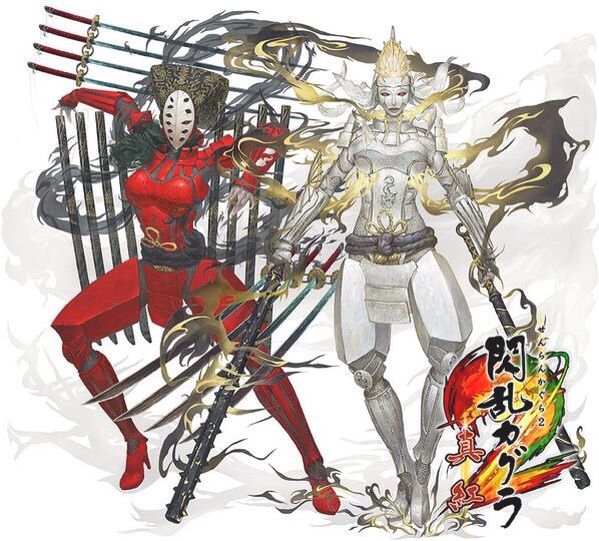
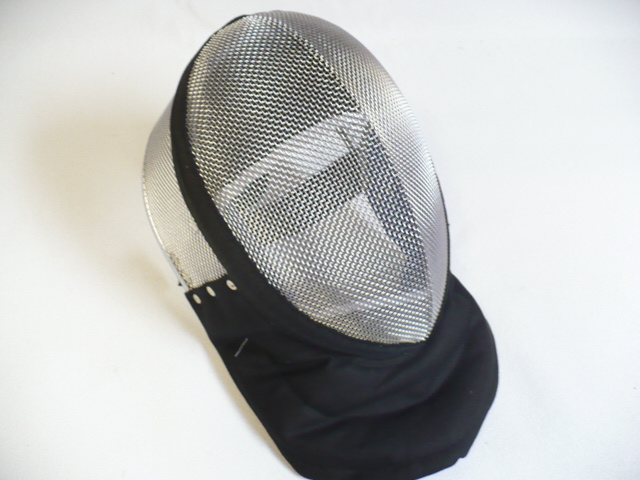
_6.png/revision/latest?cb=20151013031650)

_6.png/revision/latest?cb=20151013022727)











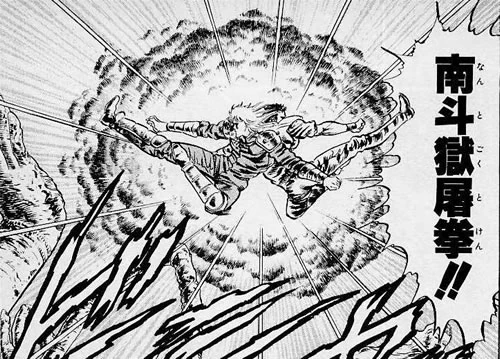
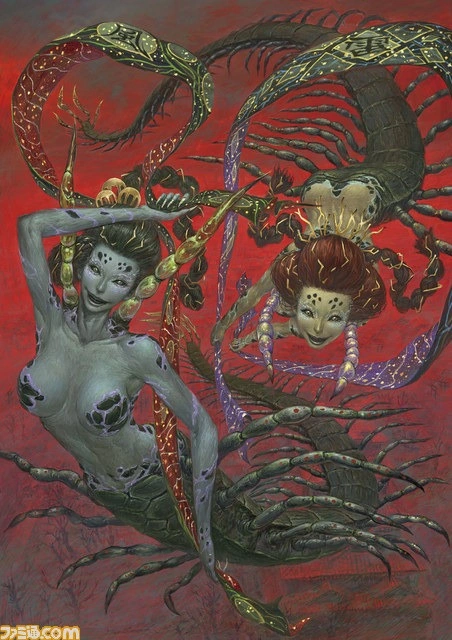
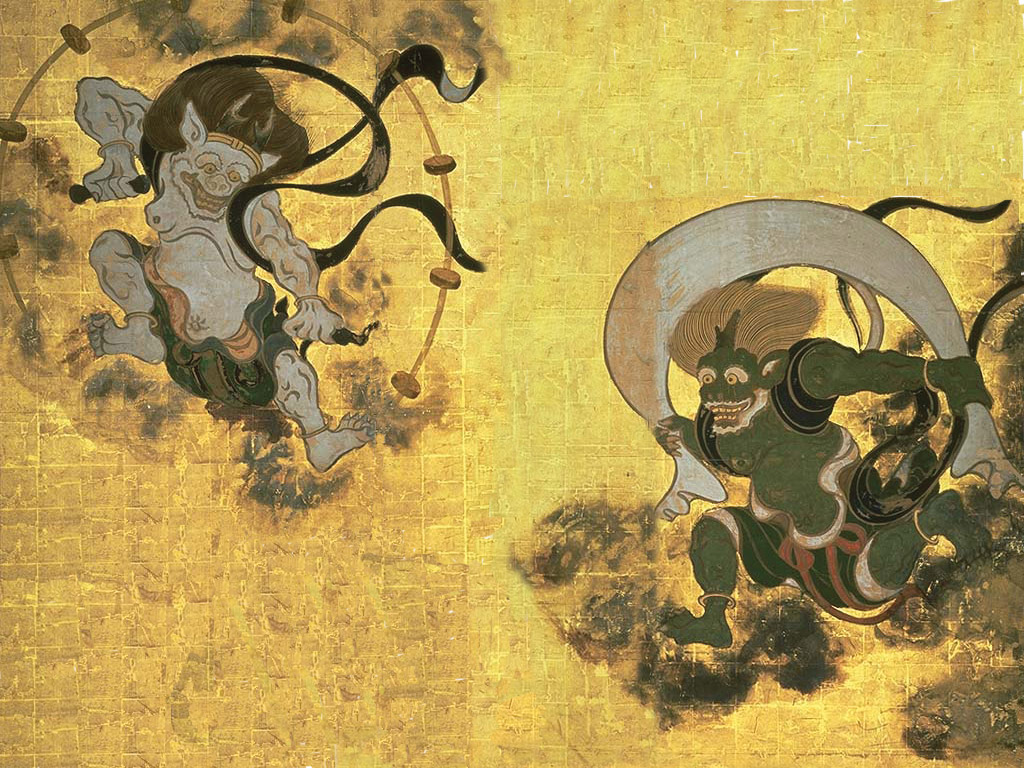






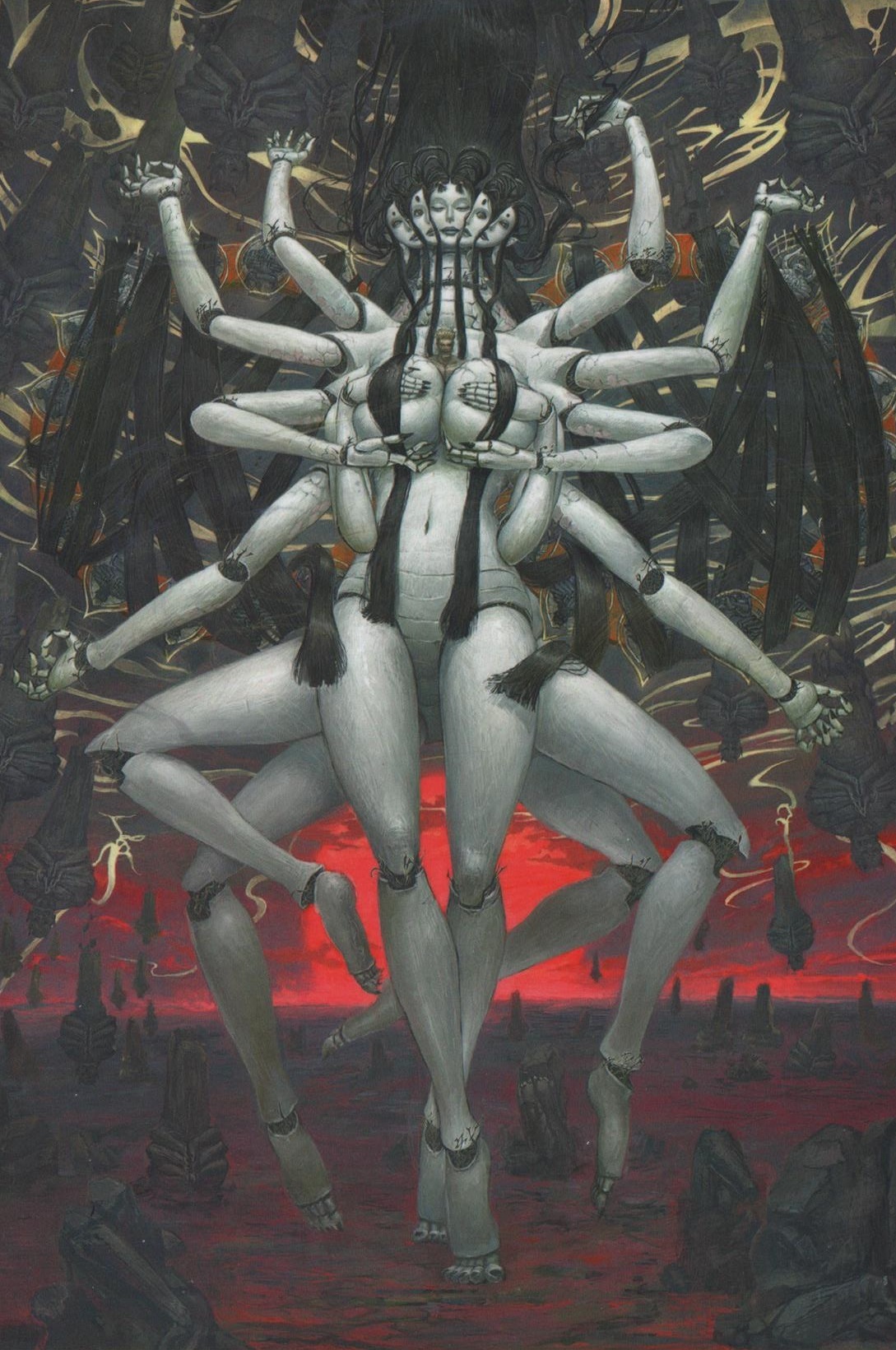

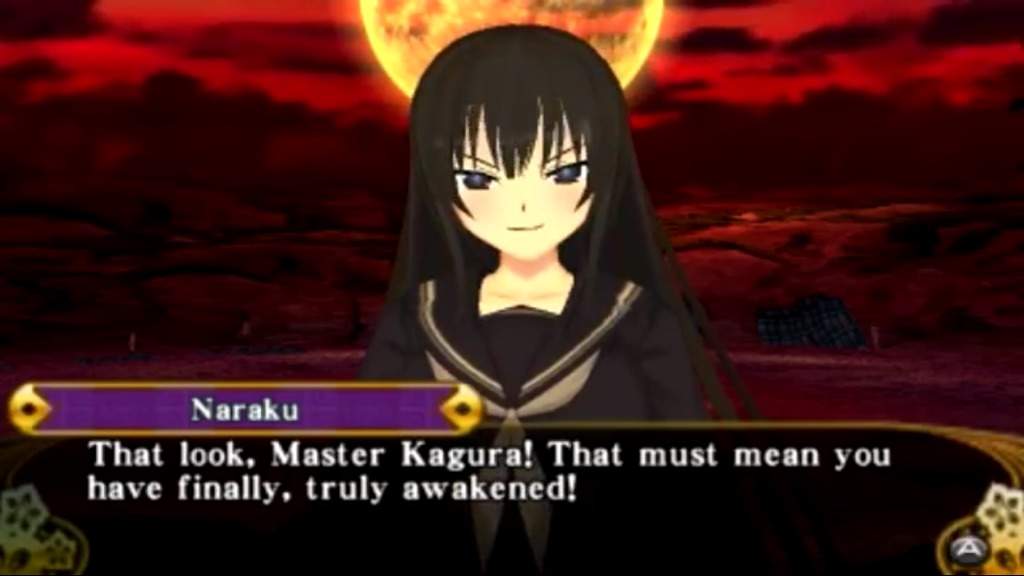

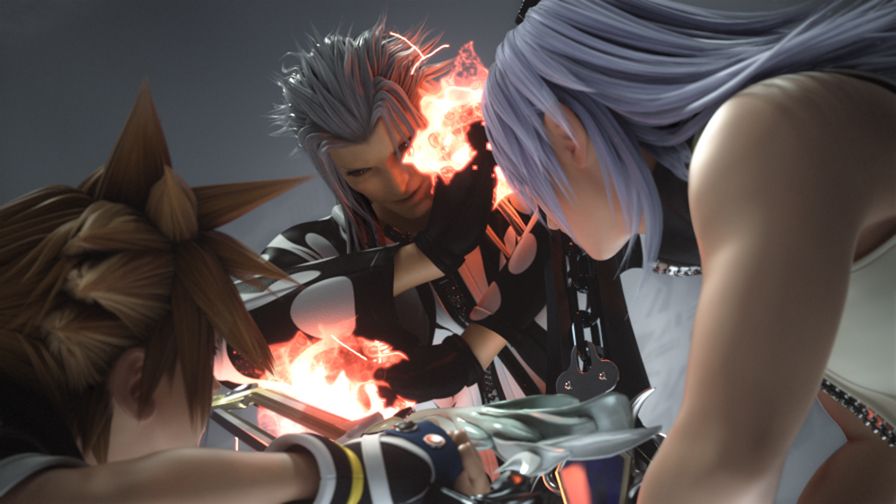






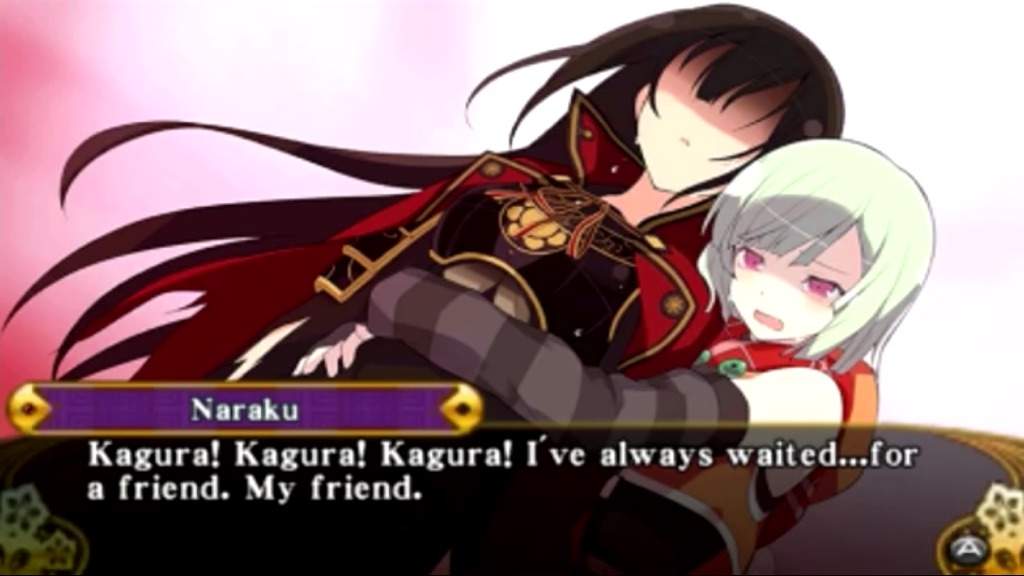





Pretty on point analysis of the game and I must say, is a refreshing take to read. SK2's plot tends to be really divisive on most circles but while some complains can be reasonable, when most of them delve into power levels discussions, well, is hard to take seriously.
ReplyDeleteSomething that you seemed to have missed is the explanation given by the in-game glossary of Ultimate Asuka, that Hanzo was lending his power to Asuka.
I never saw that and I'd rather not believe it. That's kind of stupid. You'd think Asuka would be aware of that.
DeleteAh my bad, it wasn't on the glossary but on the character bios that you can get by pressing X on the character select screen. The literal transcription of Ultimate Asuka's bio is:
Delete"The Legendary shinobi, Hanzo, has passed down his power to Asuka, awakening her true potential. She wields two swords and a strong ground-based Ninja Art."
Yeah.
Oh another thing that I forgot to mention was a sketch Takaki published on his twitter for April's Fools a coupled of years ago about Senran Kagura Zero that depicted Hanzo, Jasmine, Kurokage and Dougen on their youth on what it seemingly it was a team. If Dougen and Hanzo were indeed teammates, is an interesting angle to explore.
Yes it would be. It's doubtful Dougen would be, but that might explain why Hanzo would know who he is.
Delete